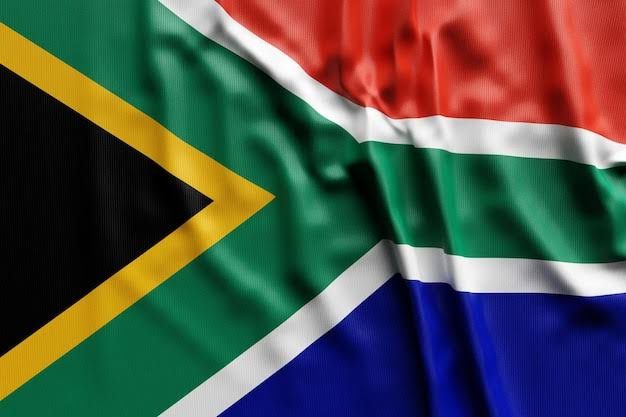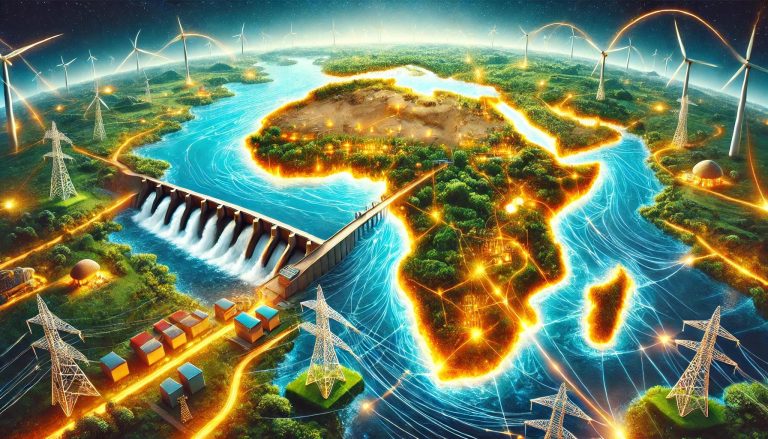
Powerless Progress: How South Africa’s Energy Crisis is Holding Its Economy Hostage
South Africa’s prolonged energy crisis, marked by frequent power outages, continues to hinder economic recovery. Eskom, the national electricity supplier, has struggled to meet demand, leading to rolling blackouts, or “load shedding,” which disrupts businesses, limits industrial output, and affects millions.
An Energy Crisis Decades in the Making
Eskom’s challenges trace back to the early 2000s when underinvestment and delayed maintenance compromised the national grid’s resilience. These structural issues became evident as outages intensified. South Africa’s Department of Public Enterprises reports over 200 days of load shedding in 2023, indicating the severity of the crisis. This has reduced output in critical sectors such as mining, manufacturing, and agriculture, costing billions of rand monthly.
Despite efforts, issues persist due to underqualified management, corruption, and reliance on coal. The South African Institute of International Affairs highlights that corruption, worsened by Eskom’s state-owned status, has led to procurement fraud and mismanagement, weakening operations. Additionally, the Centre for Development and Enterprise (CDE) notes that appointing inadequately skilled personnel in high-level positions has hindered maintenance and project execution. With coal still powering about 80% of Eskom’s grid, transitioning to renewables remains complex and requires substantial time and resources (SAIIA, CDE).
Economic Impact: Business Closures, Inflation, and Unemployment
The economic impact of South Africa’s energy crisis is extensive. Power cuts lead to delays, higher production costs, and revenue losses, forcing many small and medium-sized enterprises (SMEs) to shut down. According to the Small Enterprise Development Agency (SEDA), nearly 25% of SMEs cited power outages as a primary reason for scaling back or closing in 2023. This has worsened the country’s unemployment rate, now at 32.9%, among the highest globally.
Load shedding has also driven inflation. Food prices have soared as agricultural output declines due to unreliable power, driving up supply chain costs. With essential goods becoming less affordable, the crisis is straining households already facing high living expenses. This dual effect of restricted growth and rising inflation creates significant challenges for economic stability and quality of life.
Eskom’s Efforts: Renewable Energy and Infrastructure Investments
To address these issues, Eskom has increased its focus on renewable energy and infrastructure upgrades. A major strategy involves expanding capacity for solar, wind, and other sustainable sources. In 2024, Eskom announced a $10 billion partnership with the Just Energy Transition Partnership (JETP), funded by international partners, including the United States, the United Kingdom, Germany, and France. This aims to accelerate South Africa’s shift from coal towards greener energy, reducing emissions and stabilising the power grid.
One critical project is the Komati Power Station repurposing. Initially coal-powered, Komati is being transformed into a renewable energy hub with solar and wind facilities to generate up to 200 megawatts (MW) of clean energy, set to begin operations by late 2025. Similar projects are underway in provinces like the Northern Cape, known for high solar irradiance levels.
Eskom has also progressed in grid maintenance and technology upgrades to reduce transmission losses. Plans include advanced grid technologies to manage supply and demand better, minimising the risk of grid failure during peak hours. While these steps are promising, experts caution that full benefits may take over a decade due to Eskom’s outdated infrastructure.
Renewable Energy: A Double-Edged Sword?
While renewable energy is key to Eskom’s strategy, transitioning from coal poses challenges. South Africa remains heavily reliant on coal, with nearly 80% of electricity generated from coal-fired plants. This dependence complicates the shift, as coal industry stakeholders and workers fear job losses and economic downturns in coal-dependent regions like Mpumalanga.
The government has responded with a “just transition” framework to retrain coal sector workers for roles in renewable energy. The South African Renewable Energy Council estimates that renewables could create 1.5 million jobs over the next 20 years, partially offsetting losses in traditional energy sectors. However, retraining and reskilling require substantial investment and coordinated industry efforts.
Additionally, renewable energy sources like wind and solar are intermittent, raising concerns over consistent supply. Critics argue that South Africa’s current grid infrastructure may struggle with this variability, necessitating investments in storage solutions like batteries and pumped hydro systems. These would allow the grid to store excess energy during low demand and release it during peak hours, stabilising supply.
The Role of Independent Power Producers (IPPs)
To diversify the energy mix and reduce Eskom’s monopoly, the South African government has encouraged Independent Power Producers (IPPs) to join the market. Through the Renewable Energy Independent Power Producer Procurement Programme (REIPPPP), IPPs have added over 6,000 MW of renewable capacity, with plans for further expansion. This offers a buffer against Eskom’s limitations, especially during maintenance or unplanned outages.
In 2023, the government lifted licensing restrictions for embedded generation projects under 100 MW, allowing businesses to generate their own electricity and reduce reliance on Eskom. This has sparked private sector interest, with companies in mining and manufacturing investing in on-site solar and wind installations. While these measures reduce Eskom’s burden, they underscore the need for a regulatory framework to align private generation with national energy goals.
Pathways to Economic Recovery and Stability
South Africa’s energy crisis presents both obstacles and opportunities for economic recovery. Persistent outages undermine business confidence, deter foreign investment, and increase operational costs. However, the crisis has driven a national shift towards renewable energy, which, if managed well, could strengthen the economy.
Long-term stabilisation requires a multi-faceted approach. Eskom’s renewable investments need regulatory reforms, private investment incentives, and workforce development. International cooperation will also be crucial, as exemplified by the JETP, to provide financial and technical support for a just transition.
According to the World Bank, if South Africa successfully transitions to a low-carbon economy, potential benefits include a GDP increase of up to 10% by 2050, with sustainable job creation across sectors. However, reaching this goal requires commitment from government, industry, and society alike.
Conclusion: Balancing Immediate Needs with Long-Term Goals
South Africa’s power crisis highlights the need to balance immediate economic demands with long-term sustainability. While Eskom’s renewable energy projects provide hope for stable and affordable power, the road to recovery is long. Through government leadership, international support, and innovative solutions, South Africa can work towards a resilient and sustainable economy. Although challenging, the energy crisis may yet catalyse positive change in the nation’s economic landscape.
Aric Jabari is a Fellow, and the Editorial Director at the Sixteenth Council.



